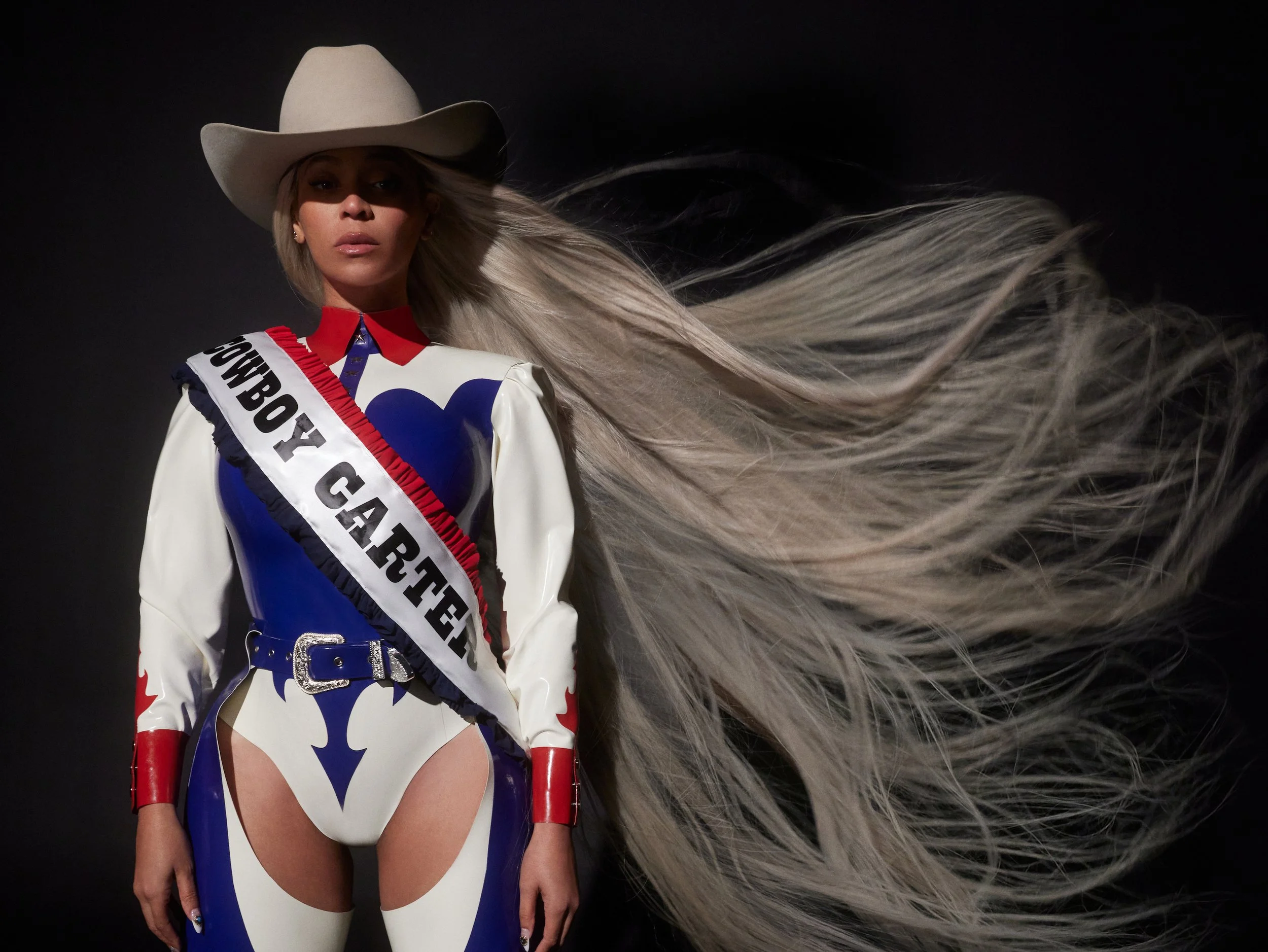Captivated by Cowboys: Why People are Enchanted by The West
When Yellowstone first hit the screens, it did more than just showcase the trials and triumphs of the Dutton family—it sparked a wildfire of fascination with the rugged charm of the American West. Dubbed The Yellowstone Effect, this phenomenon has carved a deep mark on American culture, influencing everything from retail sales to creating multi-million dollar revenue opportunities for the states of Montana, Wyoming, and Utah.
As the curtains close on the show, the legacy lives on. People’s cultural fascination with the West continues, and The Yellow Stone Effect moves into its phase of evolution as Kevin Costner's new Horizon film series hits the box office, Beyoncé’s trailblazing Cowboy Carter album sparks conversations on diversity, and The Old Salt Festival become the next lifestyle music destination in the U.S. Understanding how people’s desire to experience Western culture will set brands and business owners up to ride the next wave of financial success.
From Rodeo to Runway: The Western Fashion Movement
In retail and fashion, Yellowstone was a catalyst in the large-scale revival in Western fashion being on trend, particularly cowboy boots and hats. Sales in these categories surged as fans sought to emulate the rugged, iconic style showcased in the series. Since 2022, sales of Western boots have climbed 20% year over year. Western brands like Stetson, Tecovas and Ariat have noted a substantial uptick in demand, with Stetson reporting a 15% rise in sales of cowboy hats since Yellowstone’s debut. Beyonce’s release of #CowboyCarter album added even more fuel to the fire this spring, further bolstering hat and boot sales by 20%.
Beyond boots and hats, Western-inspired clothing and accessories also gained popularity. Boot Barn and Wrangler entered licensing deals and introduced new lines inspired by the show's aesthetic, leading to increased sales. For instance, Boot Barn's Yellowstone collection, launched in 2021, saw a 30% increase in sales within the first six months. In recent years, Diamond Cross Ranch has become a great example of building a lifestyle brand. Their apparel line extends the brand into new retail categories, and allowing larger fashion brands to use their location for photoshoots allows them to build awareness amongst new audiences. Their latest collaboration with Revolve Clothing is gorgeous.
Most recently, Cate Havstad-Casad of Range Revolution designed a big beautiful custom Silverbelly hat for Post Malone.
Image Courtesy of Cate Havstad
Frontier Aesthetics: The Rise of Western Motifs in Home Decor
The influence of the Western culture extends into the realm of interior design, with a notable rise in the popularity of Western-themed and rustic home decor. According to a report by Houzz, searches for "rustic decor" and "Western home decor" increased by 25% and 18%, respectively, in 2023. Home decor retailers like Pottery Barn and Restoration Hardware have capitalized on this trend by offering collections that feature Western motifs and rustic finishes while America’s small town, main street retailers have started to offer shoppers vintage Western goods. Specific elements of Western decor have become highly sought after, including leather furniture, horns of any sort, and artworks.
Vintage decor and Antique furniture sales have also seen a renaissance. What’s surprised Main Street business owners is the consumer demographic. A large percentage of their customers are millennials. This doesn’t surprise me as 62% of Gen Z and millennials prefer to buy second hand in response to their values and beliefs surrounding sustainability, a trend further supported by TikTok data. Several antique dealers I work with have reported up to a 300% increase in sales of vintage and antique western decor and furniture. One dealer shared me:
“For the last few years, my sales of Western decor have skyrocketed. I have designers from Los Angeles and importer/export dealers from Japan come-in and buy everything I have; a lot of what I acquire doesn’t even reach the floor. They are willing to pay a premium too. I may have sold a set of cow horns for $100, now, I can ask $300-600 and they’ll pay for it.”
From Pasture to Porch: The Boom in Direct-to-Consumer Meat Sales
Yellowstone had a surprising influence on direct-to-consumer (DTC) meat sales, resulting in many viewers choosing to purchase their meat from local ranchers and subscription services like ButcherBox and Crowd Cow. Watching the show sparked conversations surrounding animal welfare, and played a pivotal role in shedding light on consumers’ desire to eat more ethically raised meat. In 2023, U.S. meat department sales were over $122 billion, reflecting a 0.7% increase from the previous year. Local ranchers have reported higher direct sales as consumers become more interested in knowing the source of their food and supporting sustainable practices.
Wild West Wanderlust: Tourism Surges in America's Frontier Towns
Yellowstone also had a profound impact on domestic travel, particularly to states like Montana, Wyoming, Colorado, and New Mexico. According to data from the U.S. Travel Association, domestic travel to these states increased by 12% in 2022, with a significant portion of travelers citing Yellowstone as a source of inspiration. This surge in travel has translated into increased hotel bookings and ranch stays, with Montana and Wyoming seeing a 15% and 10% increase in tourism revenue, respectively .
The economic impact of this travel boom has been substantial. Montana, for example, reported an additional $731 million in tourism revenue in 2022, attributing a large part of this growth to the TV show (71.2% of state visitors watched the show), Utah reported an additional $81 million and Texas reported renewed interest from local residents in ranching-related activities. National parks saw a 5% rise in visits from 2022 to 2023; from 2023 to 2024, the National Park Service reported a 15% increase in visits. In this same time period, dude ranches experienced a 12% annual increase in bookings during this period, as more people sought authentic Western experiences.
Ranches and lodges offering Yellowstone-themed experiences have seen a significant boost in business, with many operating at full capacity during peak seasons. A few ranch operations, like Ranchlands, have taken it further, capitalizing on the $4.9 trillion wellness market. A brilliant example of combining the West with wellness comes from Ranchlands and their restorative retreats which focus on exploring inner well-being. Ranchlands ties in ranch activities like horseback riding and outdoor cooking with wellness practices like breathwork, meditation and yoga.
Ranchlands Wellness Retreats
Wild Hearts and Open Skies: Understand Our Fascination with the West
The American West has cast an irresistible spell over our collective imagination for generations. This enduring fascination transcends mere geographical attraction, tapping into fundamental human desires and psychological needs that resonate as powerfully today as they did during the frontier era.
The Psychological Pull of the Western Frontier
The West's magnetic appeal can be traced to five core elements that speak to our deepest psychological and emotional needs:
Freedom to Reinvent Yourself: The West represents the ultimate "fresh start" opportunity. Think about it: when people talk about "going West," they're often talking about leaving their old life behind. This idea of being able to start over and become whoever you want to be is especially appealing today, when many people feel stuck in their jobs, relationships, or social roles.
Connection with Nature: The West's dramatic landscapes do more than look good on Instagram. Scientific studies have found that spending time in natural environments like mountains, deserts, and forests has real benefits for our minds and bodies. Time in nature lowers stress hormones, improves mental clarity, boosts creativity, and reduces anxiety and depression.
Need for Adventure: Humans are natural explorers, and the West offers endless opportunities for discovery. This isn't just about thrill-seeking—psychologists call it "eustress" or "good stress." It's the kind of challenge that helps us grow and learn about ourselves.
Romance of the Western Narrative: The West has become larger than life through movies, books, and TV shows. These stories turn historical figures into almost mythological heroes and create powerful symbols that still resonate today. The lone cowboy represents independence, while the frontier town shows community building. The open trail symbolizes possibility, and the showdown represents standing up for what's right. These themes connect with people because they tap into universal hopes and values.
Dream of a Simpler Life: In an age of endless emails, social media, and digital overload, the Western lifestyle appears refreshingly straightforward. While actual ranch life isn't simple (ask any real rancher), the idea of living more directly—where your main concerns are tangible things like weather, animals, and land—appeals to many people tired of modern life's complications.
This fascination with Western culture isn't just history—it's actively shaping today's pop culture and lifestyle trends. Three current examples of this can be found in Beyonce’s #CowboyCarter album, Kevin Costner’s latest film series Horizon, and The Old Salt Music Festival.
Kevin Costner’s American Saga: Kevin Costner's latest movie, Horizon: An American Saga, is a sprawling Western epic exploring the American West during the 15 years surrounding the Civil War. The film, divided into four parts, allows for a deeper exploration of characters, historical context, and complex events, similar to Costner's approach in Dances with Wolves. It was so well received that it had an 11-minute standing ovation at the Cannes Film Festival.
Festivals Build Understanding: The Old Salt Festival, now in its second year, provides immersive experiences that deepen consumer understanding of Western culture and food production processes through music, art, and entertainment. What I love most about this year was how the Western Landowners Alliance created an event within an event by introducing The Land Talk Lounge at the festival.
This strategic move of creating an event within an event allowed the organization to weave serious societal topics into the fabric of a vibrant cultural gathering. By hosting interactive soil health demonstrations and panel discussions featuring experts like Fred Provenza, Nicole Masters, and Kate Geagan, and Cate Havstad, the lounge provided a platform for engaging festival-goers in meaningful conversations about sustainability and health.
Crafting Connections: Using Story to Build Raving Fans
So how can brands tap into the emotional centers of their customers? Simple, by telling a beautiful story. Our brains are naturally drawn to stories, particularly those that offer an emotional hook or a touch of escapism—qualities that the lore of the West delivers in spades. When people see their values and desires reflected in a brand's narrative, they're not just customers; they become advocates and part of a community. This shared experience not only deepens personal connections but also fosters a strong sense of belonging to a larger story. By embedding genuine emotion and universal truths in their narratives, brands can build lasting relationships and turn casual consumers into loyal fans.
Stay tuned for our next article that will focus on Evoking Emotion and Influencing Behavior Through Storytelling.
Disclaimer
While celebrating the cultural significance and enduring appeal of the American West, it is crucial to acknowledge the profound loss and hardship endured by Indigenous cultures during the settlement of these lands. The romanticization of the American West often overlooks the violent displacement, forced assimilation, and genocide faced by Native American communities. The taking of Indigenous lands and the systematic efforts to eradicate their people and cultures are tragic aspects of American history that cannot be forgotten. For more information on this critical aspect of American history, please refer to resources from the National Museum of the American Indian and Native American Rights Fund.





